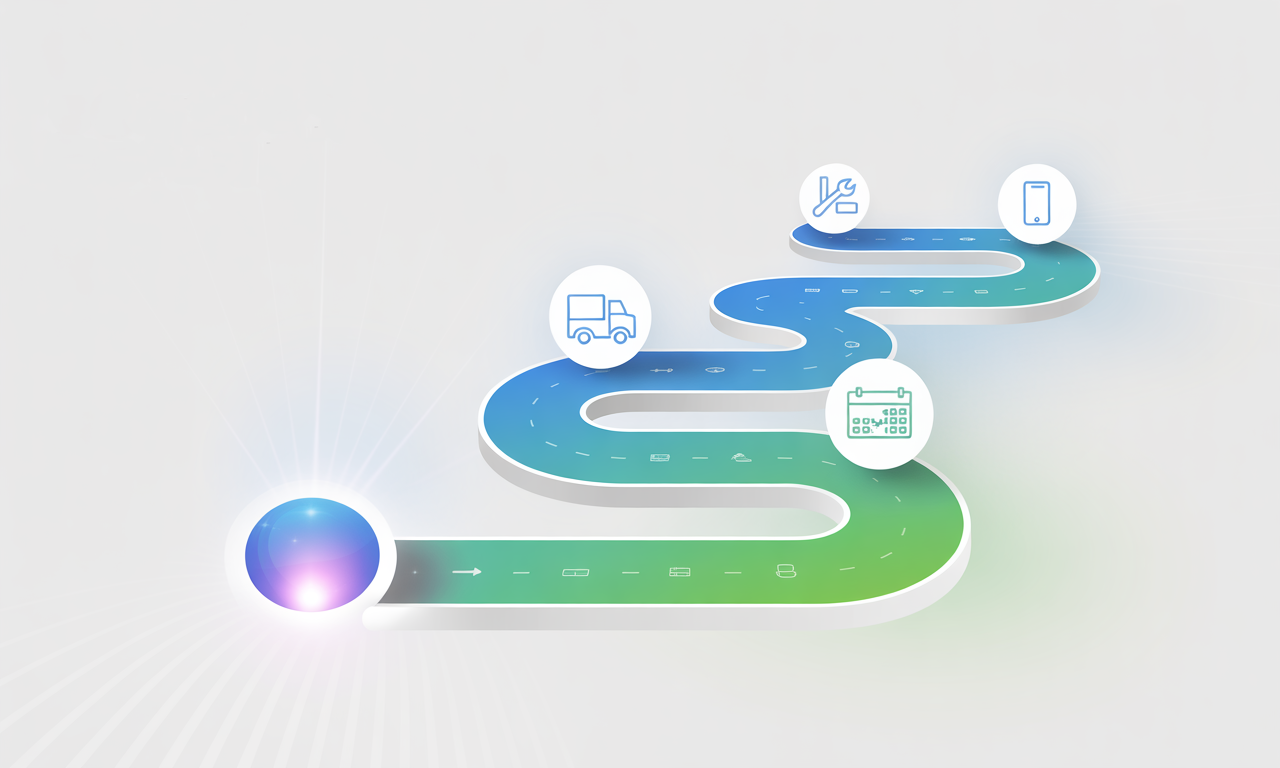In asset-intensive industries, the ability to coordinate field service work efficiently and in real time is an operational necessity. SAP’s ongoing integration between SAP Field Service Management (SAP FSM) and SAP Service and Asset Manager (SSAM) is designed to bridge this gap, empowering service technicians and dispatchers with synchronised data, smarter workflows, and an enhanced mobile experience.

At On Device Solutions, we’ve been closely following these developments to support our clients, as a trusted SAP Partner, in harnessing the full potential of their SAP mobile solutions. In this post, we deep dive into the details and upcoming roadmap of the FSM-SSAM integration.
Understanding the Integration Scenarios
SAP currently supports two core integration scenarios when connecting FSM and SSAM:
- SAP Plant Maintenance and Customer Service (PM/CS) Orders
- SAP S/4HANA Service Orders
While the architectural approach is broadly similar across both, the tools, configurations, and supported features differ in places – a factor that implementers must account for during setup.
One of the most mature aspects of the integration is the FSM Planning and Dispatching tool linkage. This enables work assignments made in FSM to flow seamlessly into SSAM. For the field technician, this means receiving the most up-to-date tasks on their device. For dispatchers, it ensures they can monitor job progress through real-time status updates.
Crucially, this integration supports assignment type 2 in SSAM — either at the item level (for S/4HANA Service Orders) or at the operation level with personnel numbers (for PM/CS Orders). Only these assignment types are currently supported when using FSM for planning.
Enhancing Field Visibility and Communication
Field service isn’t just about task lists – it’s about making the right decisions at the right time. A new addition to the integration is employee location tracking, provided location services are enabled on SSAM. Real-time technician location data is then transmitted back to FSM, giving dispatchers a live map-based view of their mobile workforce.
Technicians can also now interact more flexibly with smartforms. Previously, smartform instances needed to be created in FSM and pushed to SSAM. With recent updates, SSAM users can initiate these forms directly from their device. Templates are downloaded from FSM during sync, allowing field teams to select and complete the appropriate documentation as and when required.
Similarly, crews defined in FSM can now be made visible within SSAM – a feature currently supported only for S/4HANA Service Orders. When a technician logs into the SSAM app, any crews they belong to are downloaded, along with their related work orders. While crew creation and modification remain managed in FSM, this enhancement gives crew members the context they need to operate collaboratively.
Spotlight on Crowd Service Integration
A significant step forward in SAP’s mobile service strategy is the support for crowd service scenarios, available in the PM/CS flavour via SSAM 2505. In this model, external technicians – often contractors or third-party engineers – are granted secure access to assigned work via BTP and FSM, without needing to exist as named users in the SAP backend.
SAP has implemented a clever workaround here: the mobile application uses a shared “service user” for backend connectivity while still creating a uniquely identifiable SSAM user on initial login. This hybrid identity approach allows SSAM to maintain personalised assignment tracking and status updates for external users, all while complying with security and licensing frameworks.
This represents a practical solution to a growing challenge – how to scale field service delivery with a hybrid workforce without overburdening the core IT landscape.
Technical Architecture and Key Prerequisites
The success of any integration hinges on configuration, and the FSM-SSAM scenario is no exception. For the PM/CS scenario, integration relies on Proaxia’s FSM Connector and its replication of master and transactional data between SAP and FSM. This foundational layer ensures technicians receive relevant equipment, order, and employee data within FSM and SSAM alike.
To bridge the data models between systems, custom BAdIs must be implemented. These facilitate cross-referencing between SAP object IDs and FSM’s internal identifiers, a necessary step to support update operations like status changes, form completion, or reassignments.
In the S/4HANA Service scenario, the integration is powered by SAP Integration Suite (formerly CPI). Since both SSAM and S/4HANA operate within the SAP namespace, additional BAdIs aren’t needed for cross-referencing.
From a mobile application standpoint, SAP’s Mobile Application Integration Framework (MAIF) plays a pivotal role. Here, administrators must enable the relevant features — such as FSM scheduling, location tracking, crew visibility, and crowd integration — and map mobile statuses to FSM workflow statuses correctly. Missed configurations here are a common reason for data not appearing as expected on devices.
What’s Coming Next: Roadmap Highlights
SAP’s roadmap for FSM and SSAM integration is both ambitious and customer-driven. Future releases are expected to bring:
- Technician-driven rescheduling: Allowing technicians to adjust appointments directly within SSAM (if permitted).
- Supporting technician roles: Aiming for shared task ownership and collaboration in the field.
- Customer visibility on the SSAM home screen: Helping technicians understand the people and businesses they’re serving each day.
- Smartform and dynamic form enhancements: Enabling more nuanced data collection tied to specific service contexts.
- Time reservations and non-service assignments: Facilitating broader planning use cases across training and internal work.
Crowd service support for S/4HANA Service Orders is also on the horizon, as SAP works to unify capabilities across PM/CS and S/4HANA environments.
The integration between SAP FSM and SAP Service and Asset Manager is rapidly evolving, enabling organisations to better manage field service processes across diverse technician landscapes – internal or external, planned or dynamic.
For businesses already invested in SAP’s mobile ecosystem, these capabilities represent a tangible opportunity to streamline service delivery, improve technician productivity, and maintain greater visibility and control across operations.
At On Device Solutions, we help organisations make the most of SAP’s mobile tools by delivering tailored implementations, integrations, and advisory services. If you’re considering expanding your mobile service landscape – or want to ensure your FSM–SSAM integration is properly configured – we’re here to help. Contact us today to discuss your digital field service strategy.






